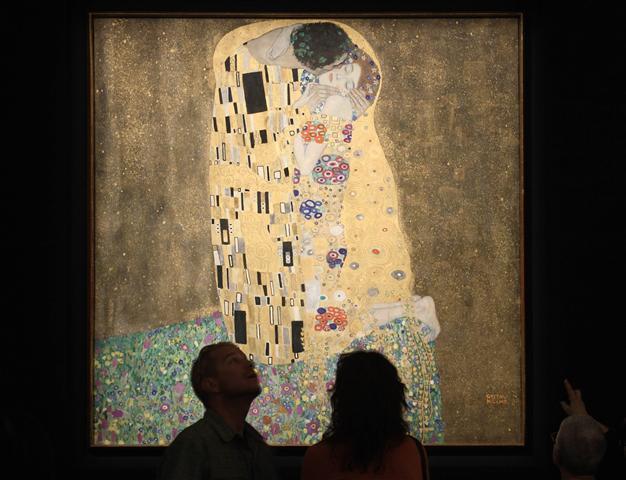Vienna celebrates Gustave Klimt’s 150th birthday
VIENNA - Agence France-Presse

On his 150th birthday, Vienna’s museums offer an intimate look at Gustav Klimt with exclusive personal shows and events, which reveals artist’s life and artistic career.
On his 150th birthday, Vienna’s museums offer an intimate look at Gustav Klimt, digging beneath the layers of paint and scratching away at the
artist... but not without a good dose of kitsch.
Over the past century, Klimt has gained worldwide recognition even beyond the art world, something Vienna has been keen to exploit with ad campaigns borrowing heavily from his famous golden paintings like “The Kiss.” His work shocked early-1900s Vienna and alternated between opulence and tormented figures. But the 400 postcards and messages that Klimt sent his lifelong friend Emilie Floege -- on display at the Leopold Museum -- also show a whimsical, laid-back personality. “I wanted to send you a funny card but first I have to get over the... enormous stupidity of mankind.
Affectionately, Gustav,” he wrote in one note.
Pictures of summer holidays show him eternally clad in a shapeless painter’s smock, hair dishevelled and a mischievous smile on his lips while stroking a cat.
In his cards -- he wrote to Emilie up to eight times a day, often inane observations -- he described his breakfast or complained of a hangover or a bad cold. Not for nothing is the exhibit titled “Klimt: Up Close and Personal”: the art here takes a backseat to the man.
The Wien Museum also used the occasion to examine a “star artist whose curse is that everyone thinks they know him so well.”
Proof is the multitude of kitschy souvenirs depicting “The Kiss” or other famous Klimt works on sale in Vienna and elsewhere.
Earlier this year, the museum made a call on Facebook for the “worst of the worst” and the result was some 140 objects sent from around the world, including pictures of tattoos, a toilet-seat cover and a bejeweled egg with the two figures from “The Kiss” rotating to Elvis Presley’s “Can’t Help Falling in Love.”
Alongside this however, the Wien Museum has also put its entire Klimt collection on show for the first time, including the artist’s death mask, his massive painter’s smock -- the last in existence -- and some 400 drawings from his beginnings in art school to his last few years.
Far from the golden spirals and arabesques of his most famous work, the rough sketches -- here a leg, there a shoulder -- provide “an insight into Klimt’s development and working methods: a close-up of an artist,” said museum director Wolfgang Kos.
paiting, Gustave Klint,
